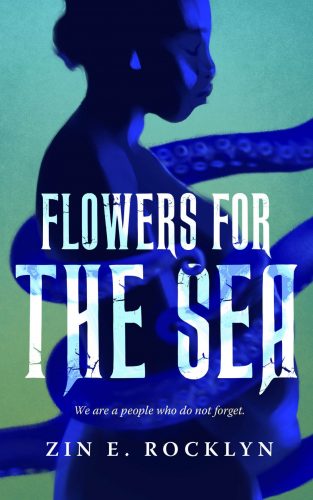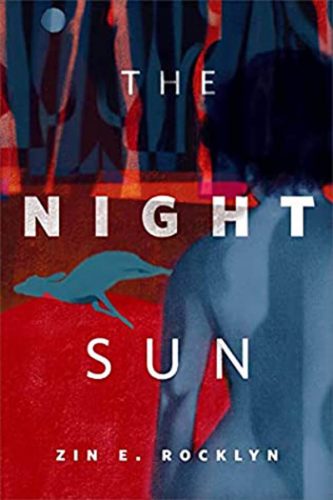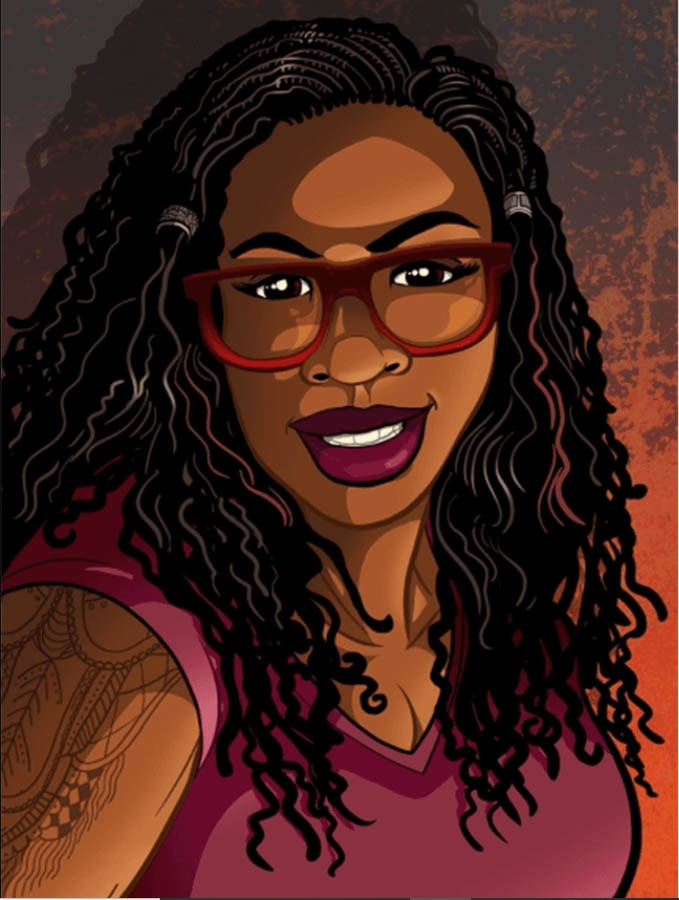In her 2018 essay titled “My Genre Makes a Monster of Me”—which was published in Uncanny Magazine’s September/October 2018 ‘Disabled People Destroy Science Fiction’ special edition—horror writer Zin E Rocklyn laments the ways her body makes her feel monstrous. As a Black, fat, disabled immigrant and queer woman living in the United States, there are many ways that people have been taught to fear her, even when she’s just minding her own business.
As such, she notes in the essay that she has come to empathise with many of Hollywood’s monsters. In many horror movies, the villains’ monstrosities are just cruel reskins of disability and injustice. For example, the “monstrous” people from movies like The Hills Have Eyes and the Wrong Turn series are victims of illegal radioactive waste dumping that leaves them and their offspring disabled and deformed. But they aren’t depicted as the victims of an environmental disaster. They are juxtaposed with the pretty white people wandering into their isolated territories, their differences making them dangerous threats to the people snooping in their backyard.

Similarly, when indigenous and Black people protest environmental injustices on their own land or in their cities, they are branded as nuisances and either dismissed or attacked. Their attempts to save themselves, their future and their children’s futures are branded as monstrous.
So, what if the monsters could tell their own stories and lay their injustices bare? What would happen if the people who are branded as monsters for fighting for their lives and rights embraced their monstrosity? What would they become? What would they do to change themselves and the world?
Rocklyn explores these ideas in her stories “The Night Sun” and “Flowers for the Sea”. By subverting our idea of who is a monster and dropping her characters into unsettling situations, she creates chilling horror that stayed with me beyond my first reading.
The Night Sun
“The deer was long dead before my husband struck it with our car.
“The fur was mottled with blood and fluids, tendons of the neck naked to the air while threads of muscle clung to the mass of the deer’s body. Its head stood high, all nineteen points of its antlers aimed toward the heavens, its pulse visible in the exposed veins. I could see the forest behind it, the rest of the deserted highway as clear as a clean windshield threaded with red, palpitating stratum.
“I have its blood on my hands.”
“The Night Sun” is a contemporary horror novelette that begins when Avery and her husband Jonas are travelling along the back roads of Colorado on their way to a rented cabin in the middle of the woods. But this is no relaxing weekend getaway. Avery and Jonas are on the cusp of divorce, and this weekend is supposed to test whether they can repair their relationship and move toward a healthier marriage.
Before they even get there, they begin arguing and Jonas starts to assault Avery. In his distraction, he doesn’t see the deer and slams into it head-on, injuring them both and wrecking the car.
Shortly after, the sheriff and his emergency medical technician find them, help patch them up, and warn them about the beasts roaming in the woods at night. They both seem suspicious about the source some of Avery’s injuries, and after driving them to their cabin, the sheriff gives her his number in case she needs any more help. All the while, Jonas hovers over her, overbearing with his apparent protectiveness.
The pair settle in for the night, shaken but alive. For a moment, it seems like their near-death experience might lead to a marriage-saving revolution. That is until Avery is attacked by one of the beasts in the woods. Unbeknown to Jonas, she begins to transform both physically and mentally. Her newfound monstrosity gives her the strength she needs to end the abuse and reconnect with a community she once thought she’d lost.
Flowers for the Sea
“Every once in a while, an affliction is cast upon we birthing folk.
“I am the only one to carry this far.
“Forty have perished for the sake of continuing our wretched lineage, their blood stained on our deck.
“…Hubris could not shield us from the sun’s head, from the boldness of below-surface creatures caressing the innocent flesh of our curious young ones. We were the finest coastal traders of the continent. Sea-battling vessels, fish, fruit and labour were our currency. We were hard backed and hardworking. We were proud.
“And now we are dying.” – pp. 6-7
“Flowers for the Sea” is a novella that straddles the line between fantasy and science fiction. It opens with a woman named Iraxi lamenting her condition. She is among the last of humanity trapped aboard a ship floating aimlessly and endlessly around a flooded world. Most importantly, she is heavily pregnant, even though she does not want to be.
A part of her resistance to motherhood stems from the fact that she is the last surviving member of an oppressed minority group suspected of having the ability to commune with and control the dangerous sea creatures patrolling the rising seas. She bears the mental, emotional and physical scars of her people’s genocide, and despite being the only one aboard who will bring a child to term, she is still shunned by the other passengers.
As Iraxi goes into labour, she quickly realises that something is wrong with her child. It controls her body and mind in terrifying ways, forcing her to relive her horrific past and see visions of a doomed future. It forces her into unsafe spaces aboard the ship and, when it’s finally born, acts unlike any new-born she has ever seen. The child terrifies Iraxi.
Yet, as she reluctantly bonds with it and learns of its intent and origins, she accepts that she is but a vessel for the child’s otherworldly agenda and her own rage.
Claustrophobic horror
One thing I appreciate about Rocklyn’s work is how she combines sensory details, limited settings, and short word counts to create unsettling, claustrophobic horror.
For example, most of “The Night Sun” is set in a cabin in a beast-infested woodland. The characters are stranded and have no access to transportation to escape should things go wrong. Rocklyn amps up the anxiety with this because Avery is in an abusive relationship, and we already know what Jonas can do from her because of the opening scene. This makes “The Night Sun” a riveting and terrifying read since you feel as trapped and alone as Avery does.
“Flowers for the Sea” is even more claustrophobic as it’s set on a ship with what’s left of humanity in a flooded world. Iraxi can neither escape the confinement, nor can she have any true privacy because, despite the number of casualties in the years of the ship’s voyage, it’s still a crowded, disgusting place to be.
It’s even worse for Iraxi because she is a minority aboard the ship who has to deal with an endless microaggressions from passengers who both fear and hate her. While she has developed a sort of reverse psychology for herself, choosing to savour and revel in the passengers’ hatred, we see that she’s broken by the endless stream of hate. Iraxi’s claustrophobia doesn’t stop here, however. In an interview on the “Castle of Horror” Podcast with Jason Henderson, Rocklyn notes that Iraxi’s own body is a source of claustrophobia. Pregnancy is already hard on a body, but Iraxi is weeks overdue and thus sleep-deprived, achy and uncomfortable as she cannot move her body the way she wants.
While these are relatively normal issues many pregnant people face, her condition is made worse when the being within her awakens, and she discovers that it can control her body in ways no human child can. Iraxi’s journey from having a lack of control and agency over her body and fate, to the way she takes it back and forges a new path forward “Flowers for the Sea” a truly unsettling read.

Becoming a monster to save yourself
“The Night Sun” and “Flowers for the Sea” have one important detail in common: they are both about Black women becoming monstrous to protect themselves from abuse. Transformation to their monstrous forms gives them agency and power in situations where they once had none. Ultimately, their abusers’ shock reverberates in the silence they were forced to inhabit as their actions scream louder than the words they were never allowed to say.
The difference between the two stories has to do with the kinds of oppression the women are facing in their respective lives.
“The Night Sun” opens with Avery on a precipice. She has been in an abusive relationship with a white man for fourteen years. Now, she is in a position where she must choose whether to divorce him and move on or stay with him and hope that he changes somehow. Later in the story, we understand how and why she got into that relationship, how she was isolated from her friends and family, and how much Jonas has hurt her. Her transformation gives her access to more information from her surroundings and the ability to fight back if needed. She uses this fully to her advantage.
On the other hand, “Flowers for the Sea” is also about embracing monstrosity, but unlike Avery—who finds community and help because of her monstrous transformation—Iraxi uses her monstrosity to reject the community that has already shunned her. Throughout the story, we get several glimpses into how Iraxi is mistreated as an individual and as a part of her oppressed community while they were still alive. Little by little, the oppression eats away at her psyche, and we see how she has tried to harm herself to escape the pain of her existence.
In “My Genre Makes a Monster of Me”, Rocklyn poses these questions to her readers:
“Why didn’t those monsters rise up together and say **** this world, it’s time to start over? Why continuously strive to prove humanity to those ingrained with their own vanity?”
Iraxi answers these questions. She deliberately isolates herself from the people who hate her, but when prompted by her otherworldly child she uses her transgenerational rage to make the world a better place for herself.
Both “The Night Sun” and “Flowers for the Sea” were stories that made me anxious. Many of their disturbing details stayed with me long after I finished reading them for the first time. But most of all, I liked the way Rocklyn subverted our ideas of who monsters are and what monstrosity can mean for marginalised people. By the end, while I felt empathy and righteous rage and joy for both Avery and Iraxi, I was also a little terrified of them. It was gorgeously executed horror.
I would recommend these stories to anyone who wants quick, scary reads that go beyond superficial jump scares. Rocklyn’s work is brilliant, I sincerely look forward to what she will be cooking up next. Judging from these pieces and her essay, I know that it’s going to be terrifying.
“The Night Sun” was published by Tor.com and is free to read online here: https://www.tor.com/2020/03/11/the-night-sun-zin-e-rocklyn/
Rocklyn’s Essay “My Genre Makes a Monster of Me” was published by Uncanny Magazine and is free to read online here: https://www.uncannymagazine.com/article/my-genre-makes-a-monster-of-me/
Want to read some more subversive short horror? Try the following:
1. “Choke” by Suyi Davies Okungbowa https://www.tor.com/2022/09/14/choke-suyi-davies-okungbowa/
2. The Ballad of Black Tom by Victor LaValle
3. The Backbone of the World by Stephen Graham Jones
4. Bloody Summer by Carmen Maria Machado
5. “The East Hound” by Nalo Hopkinson https://www.baen.com/Chapters/9781597804608/9781597804608___8.htm






